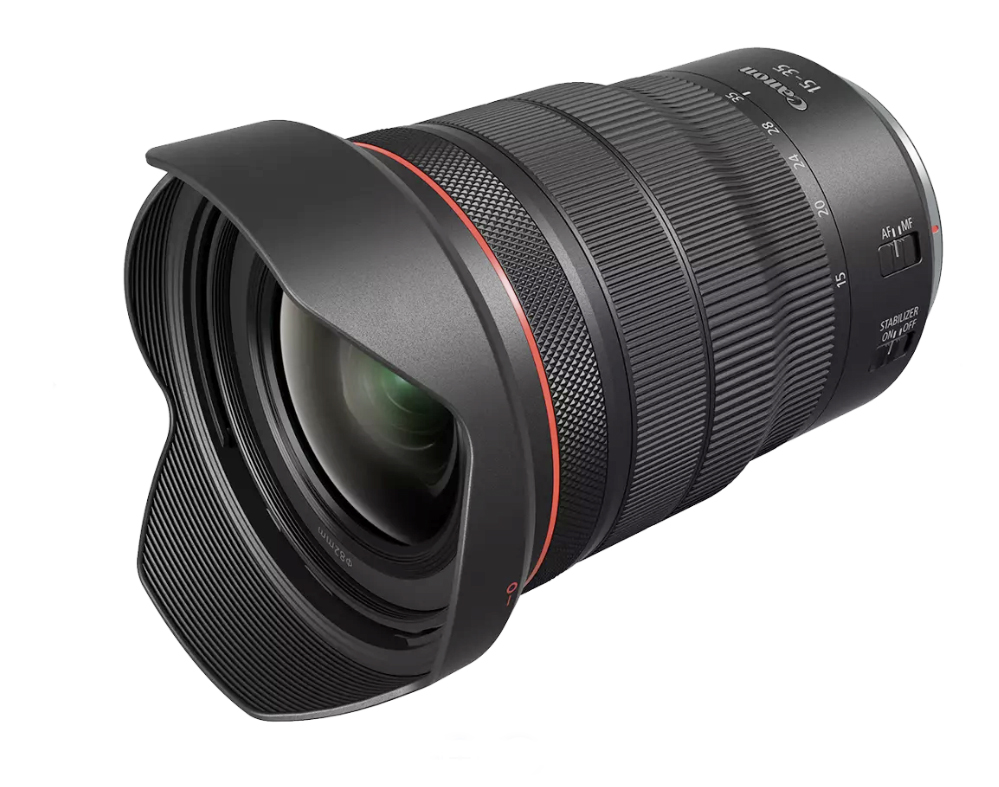
I take thousands of photos: birds, kayaking adventures, landscapes, panoramas, travel photos, and classical music. Lots of classical music.
For 13 years I have been the staff photographer for Festival Mozaic, an international music festival held here in San Luis Obispo, California. The event is now in its 53rd year.
In those years as the festival’s photographer, I have been shooting with various Canon cameras and lenses. My first was a Canon EOS 1D Mark III, followed by an EOS 5D Mark III, followed by a mirrorless EOS R, and recently by a mirrorless EOS R5. In the middle I also used a Canon G4 (also mirrorless) with an adapter that allowed me to use my full size lenses on it. When I bought the R, I bought an adapter to use the full-size lenses with that new type of camera. Canon made it easy; their $100 adapter allows all the previous model lenses to be affixed to the new cameras with full electronic control.
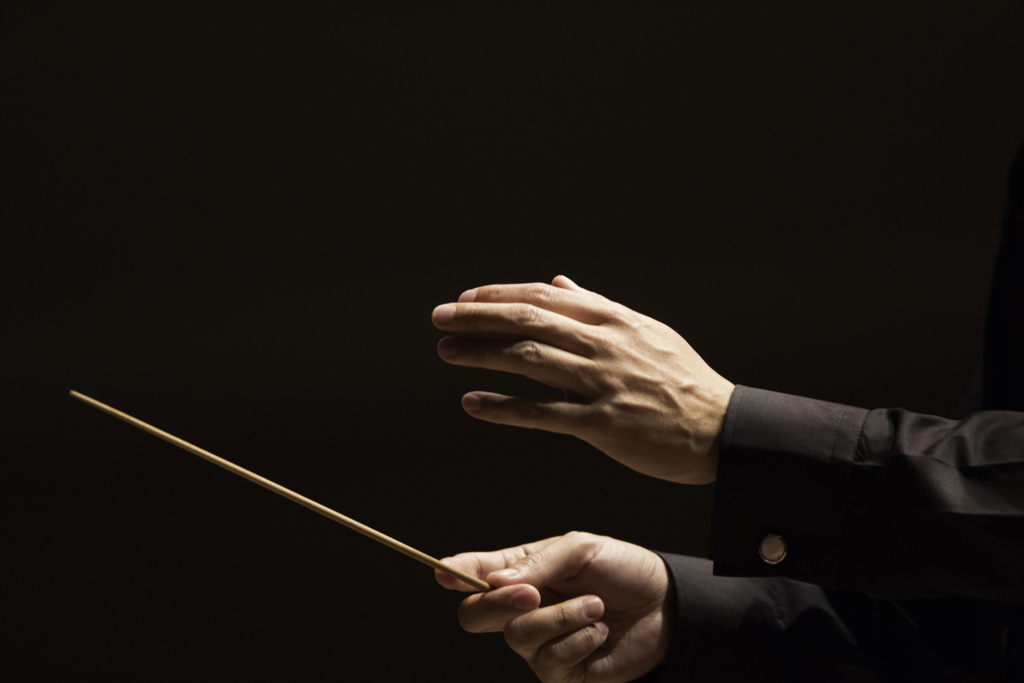
The greatest draw of the mirrorless camera for me is its silent shutter. Not having the clip-clop of an SLR’s mirror/shutter makes it possible for me to be in the audience, taking photos without a soul even knowing that I am there. My camera makes no sound at all, and that is the amount of sound that is tolerable in the pianissimo parts of a concerto.
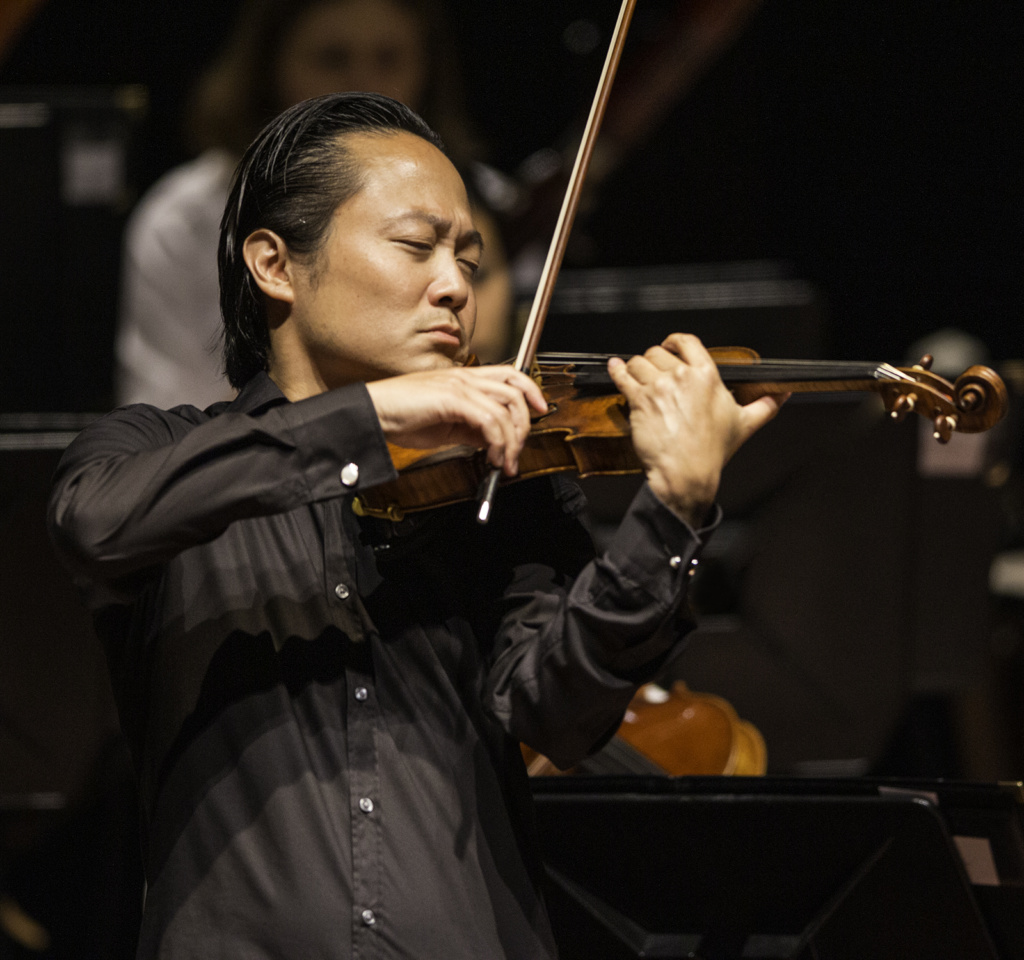
All of my existing lenses work fine on the mirrorless cameras with the adapter. That’s a good thing because I have acquired numerous lenses over the years, with a wide range of focal lengths:
8-15 mm fisheye
16-35 mm wide angle zoom
28-300 mm wide/telephoto zoom
100-400 mm telephoto zoom
100 mm macro prime
…and a telextender, a 2X model, that makes it possible to use the 100-400 as a 200-800mm lens.
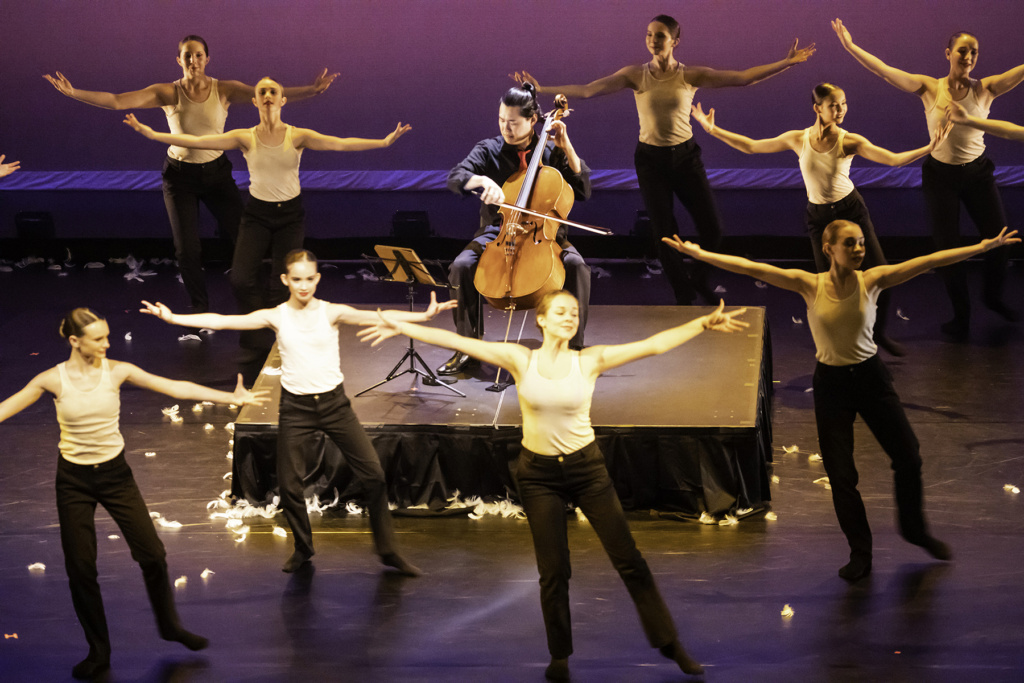
A year or so ago I had to trash the 28-300 mm lens because something came loose inside it, and I couldn’t afford to have it repaired – or more correctly, I didn’t want to pay $900 to repair it. I put it in e-waste.
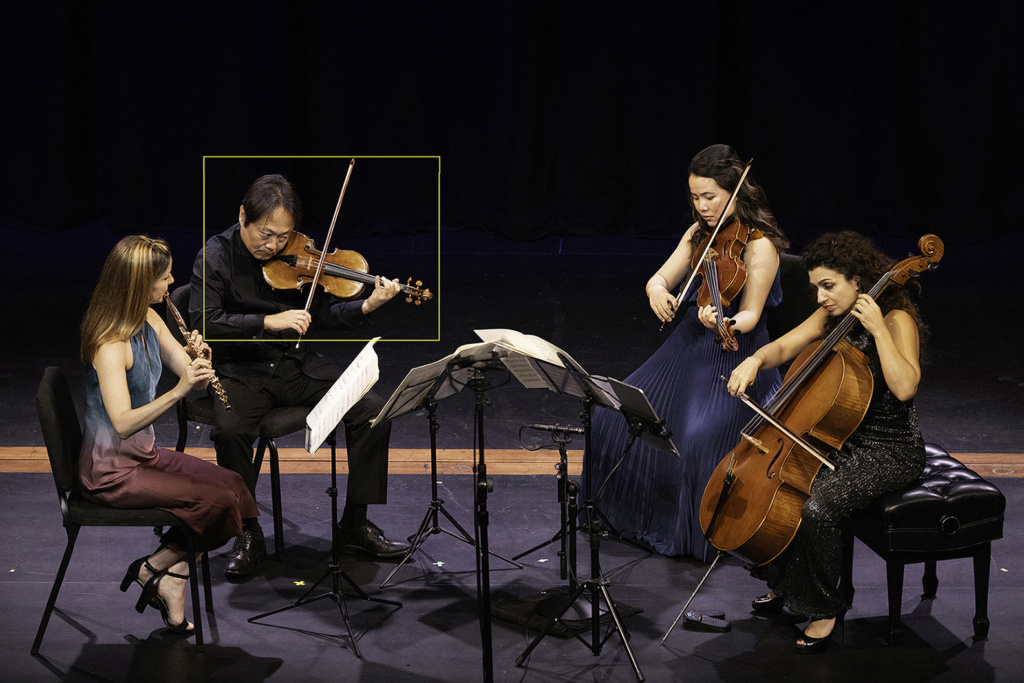
Earlier this year I bought my first RF lens for the mirrorless cameras. It is a 24-105mm zoom. This filled a gap that I had created by junking the 28-300. It was curious that this lens suddenly became my lens of choice when shooting journalistic photos. Previously, I would have preferred my 16-35mm lens.
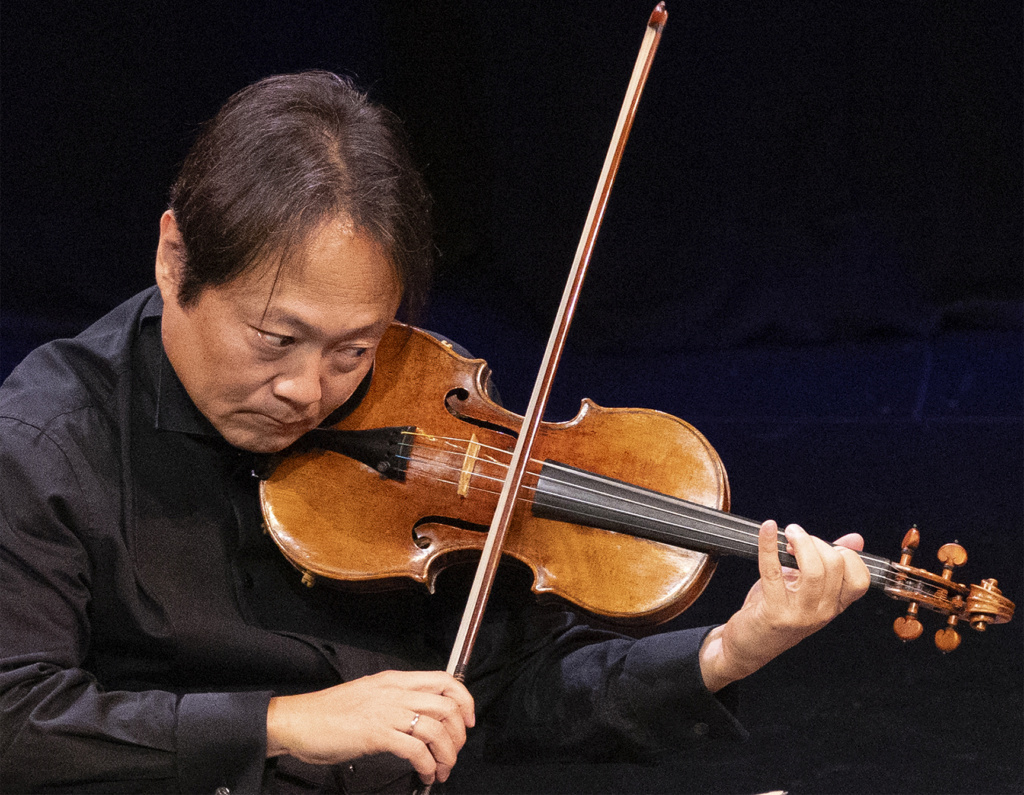
I had normalized my lens collection. Then, in May, I attended the annual Summit of the North American Nature Photography Association in Tucson, Arizona. While there, I borrowed a Canon RF 100-500mm zoom lens from the Canon booth in the trade show. They let me have it for a day, and I enjoyed it – a lot. So I returned it the following day, then walked over to the B&H booth and bought one!
I think it’s the perfect classical music lens. It’s longer than my existing 100-400, and it is visibly sharper. I have read that the new RF lenses are sharper than their predecessors, and I expect this to be true if only because they are newer, taking advantage of improvements in lens design, lens materials and lens manufacture. Also, the final elements in these new lenses are closer to the sensor than the previous models, thus the post-diffraction component of the image is not traveling so far to reach its destination.
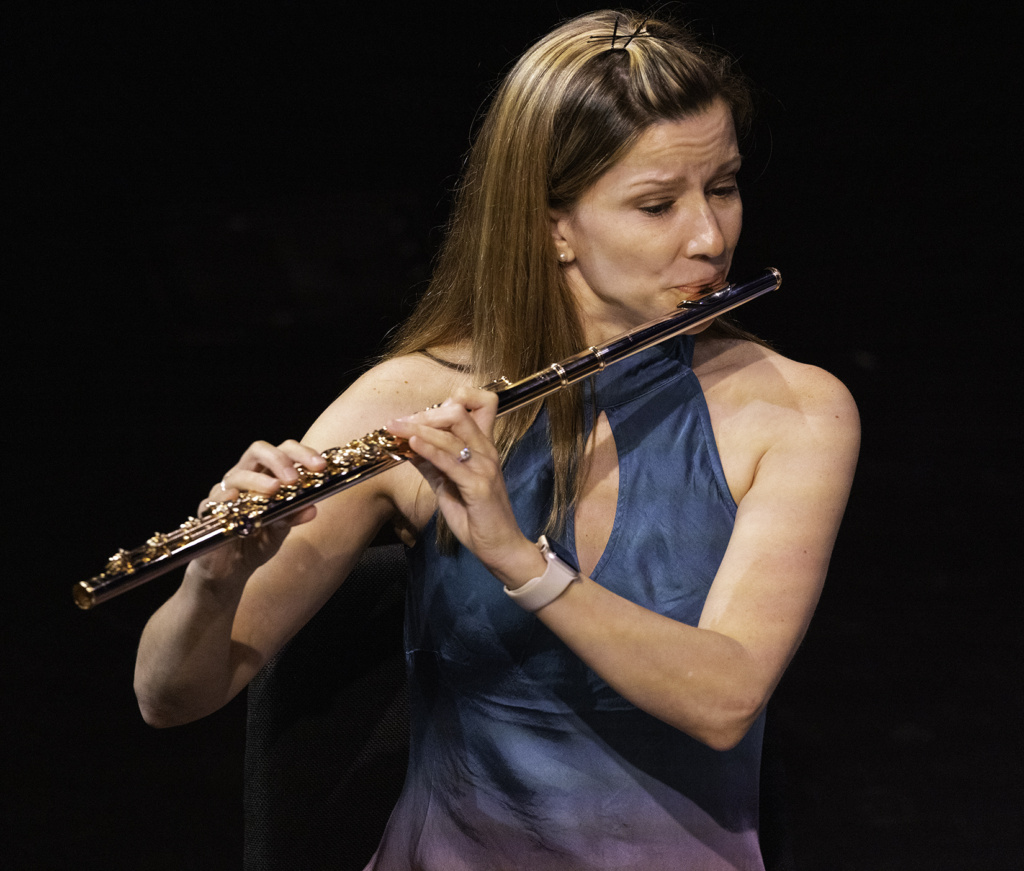
So far, having taken a few thousand images with the 100-500 lens, I am very impressed with the images. I also like its ability to focus faster and more accurately than its predecessor. This is a terrific lens.
Canon makes an RF telextender, which will work on this lens (though it has a limitation on the short end of its focal length). So far I have not needed that device, though I have had momentary thoughts about it – I wonder if the telextender would help right now? I let those thoughts pass and continued shooting with the unmodified lens.
I think that the accompanying images will show how nice a lens this is. I am excited that I can now shoot at 500mm without an adapter, and also excited that the high resolution sensor on the R5 camera allows me to shoot then crop usable images out of the larger photos captured by this camera. Those images are significantly larger than the previous cameras provided.
All told, I’m a very happy photographer with my mirrorless Canon cameras and my new RF lenses, built to work perfectly with those cameras.
I am also honored to be the photographer of these wonderful performances. It’s a lot of work, and the rewards are endless!
Addendum June 9, 2024
I added one more lens to the collection this week. I found a used, but immaculate 15-35 mm RF zoom on eBay this week, and I bought it. It came without a box or warranty card, but is in perfect condition. I am impressed by the feel of this fine lens.
With this, I can now put all but one of my Canon EF lenses away (the 8-15 fisheye zoom is the one I can’t replace yet). I am looking forward to shooting with this marvelous lens.
